Top 5 Shopify Fashion Trends for 2024: How to Stay Ahead
Zeynep Avan
When we think about the fashion trends of the 1950s, we think of softer shoulder lines, smaller corset waists, and the popularization of long skirts and rounded hips.
In the 90s, Air Jordans, backless hats, Polo shirts, slap bracelets, and cargo pants dominated the trends.
Cultural shifts, iconic figures, and the influence of music and movies largely shaped fashion during this period.
Today, the fashion industry is moving toward a digital age. E-commerce platforms like Shopify have changed how trends are created, discovered, and adopted.
According to a huge number of Shopify fashion stores, there are some widely accepted trends, and we want to share them with you to inspire the improvement of your online fashion store and brand.

Sustainable and Ethical Fashion
The production of clothing involves various processes often hidden from the consumer’s view, including the environmental impact of textile production, waste generation, and labor conditions.
As awareness of these issues has grown, so too has the demand for sustainable and ethical fashion products. This growing awareness has now solidified sustainable and ethical fashion as a major trend.
Customers are increasingly turning to brands that prioritize sustainability and ethical practices. This shift is driven by a desire to make purchasing decisions that align with their values and contribute to positive change in the industry.
Brands now use eco-friendly materials, reduce waste, and ensure fair labor practices in their supply chains.
Rise of Eco-Friendly Materials
Fashion brands are now more into exploring innovative materials such as recycled fibers, organic cotton, and biodegradable fabrics.
Brands recognize that customer expectations and trending behaviors have shifted, leading them to explore innovative materials like recycled fibers, organic cotton, and biodegradable fabrics.
The materials they use not only reduce environmental impact but also appeal to consumers who seek to minimize their ecological footprint.
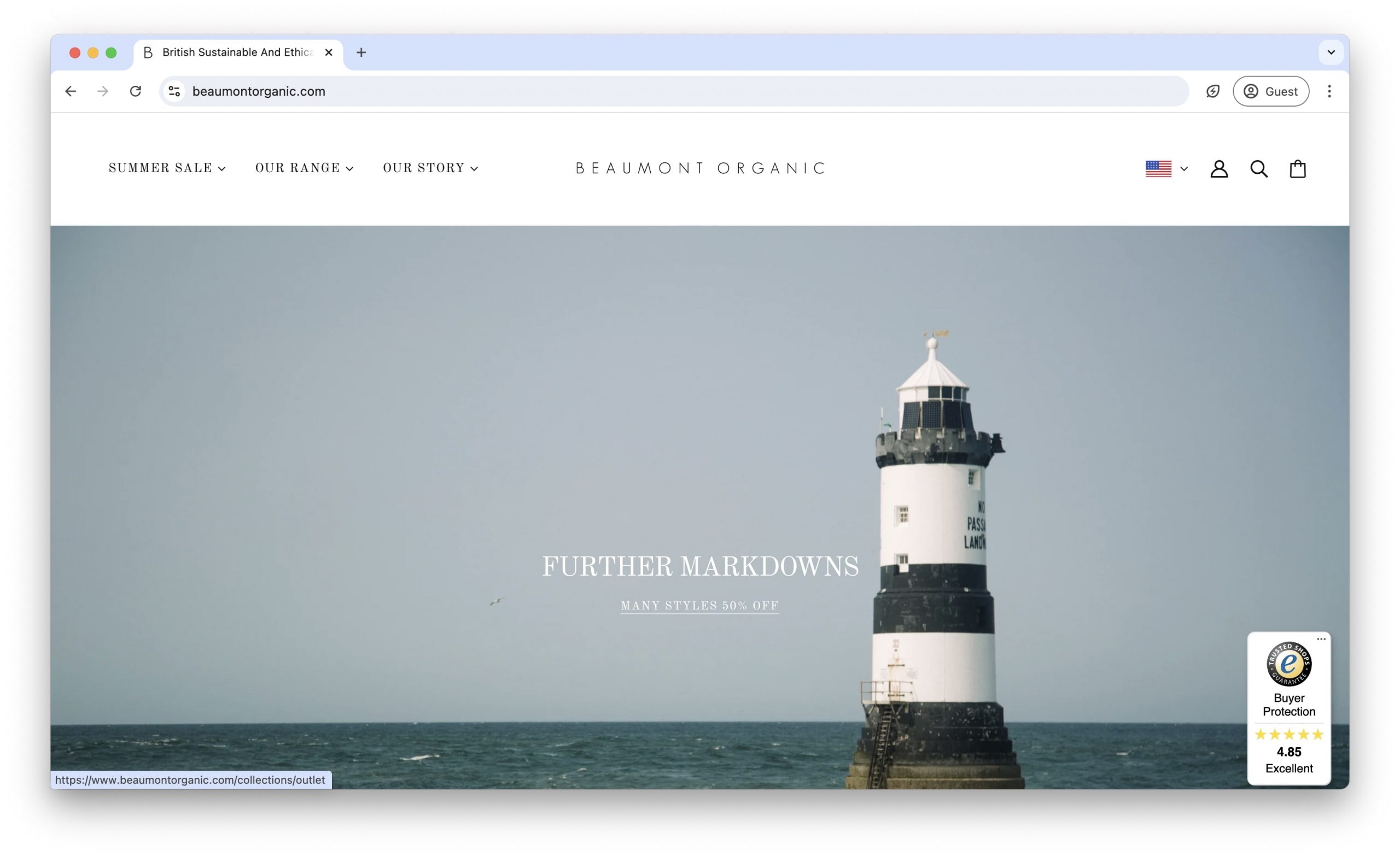
Beaumont Organic, for example, emphasizes transparency in its use of eco-friendly materials throughout its online shopping experience.
On their product pages, such as the “Onda Organic Cotton Dress,” the brand details the composition of the fabric—100% organic cotton—sourced from Guimaraes, Portugal.
They further enhance consumer trust by disclosing their factories and locations: the fabric is spun and woven in Barcelos, Portugal, and dyed in Braga, Portugal. Each process is certified by GOTS (Global Organic Textile Standard), ensuring adherence to high environmental and social standards.
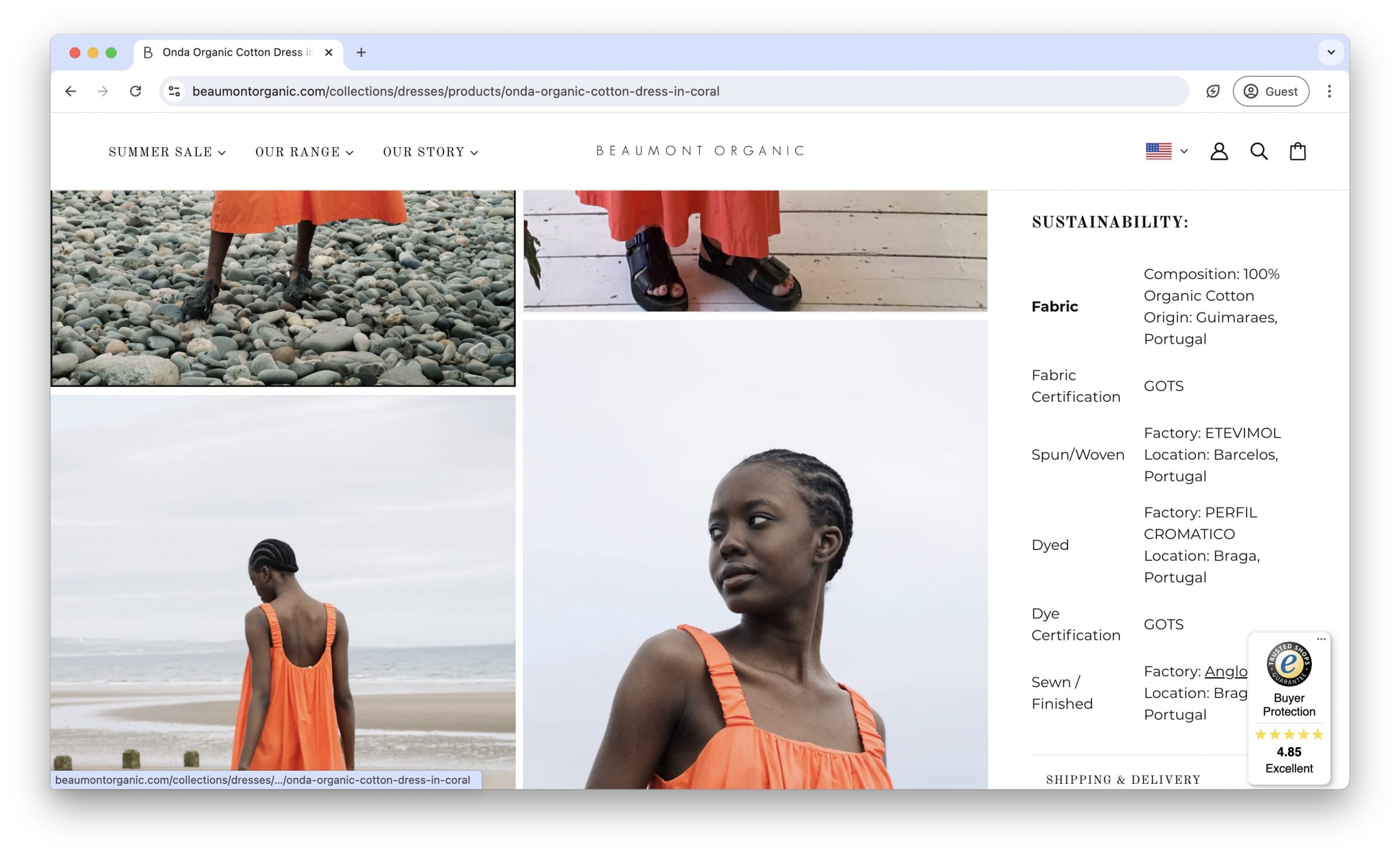
By integrating these details directly into the shopping experience, Beaumont Organic not only educates its customers about the product’s sustainable attributes but also strengthens its brand image as a leader in ethical fashion.
This approach meets the demands of eco-conscious consumers and sets a standard for transparency in the fashion industry.
Transparent Supply Chains
Transparency in the supply chain has become another movement of Shopify fashion trends.
Brands are using technology to provide insights into their production processes, sourcing locations, and worker conditions.
This transparency builds trust and strengthens brand loyalty by allowing consumers to make informed choices.
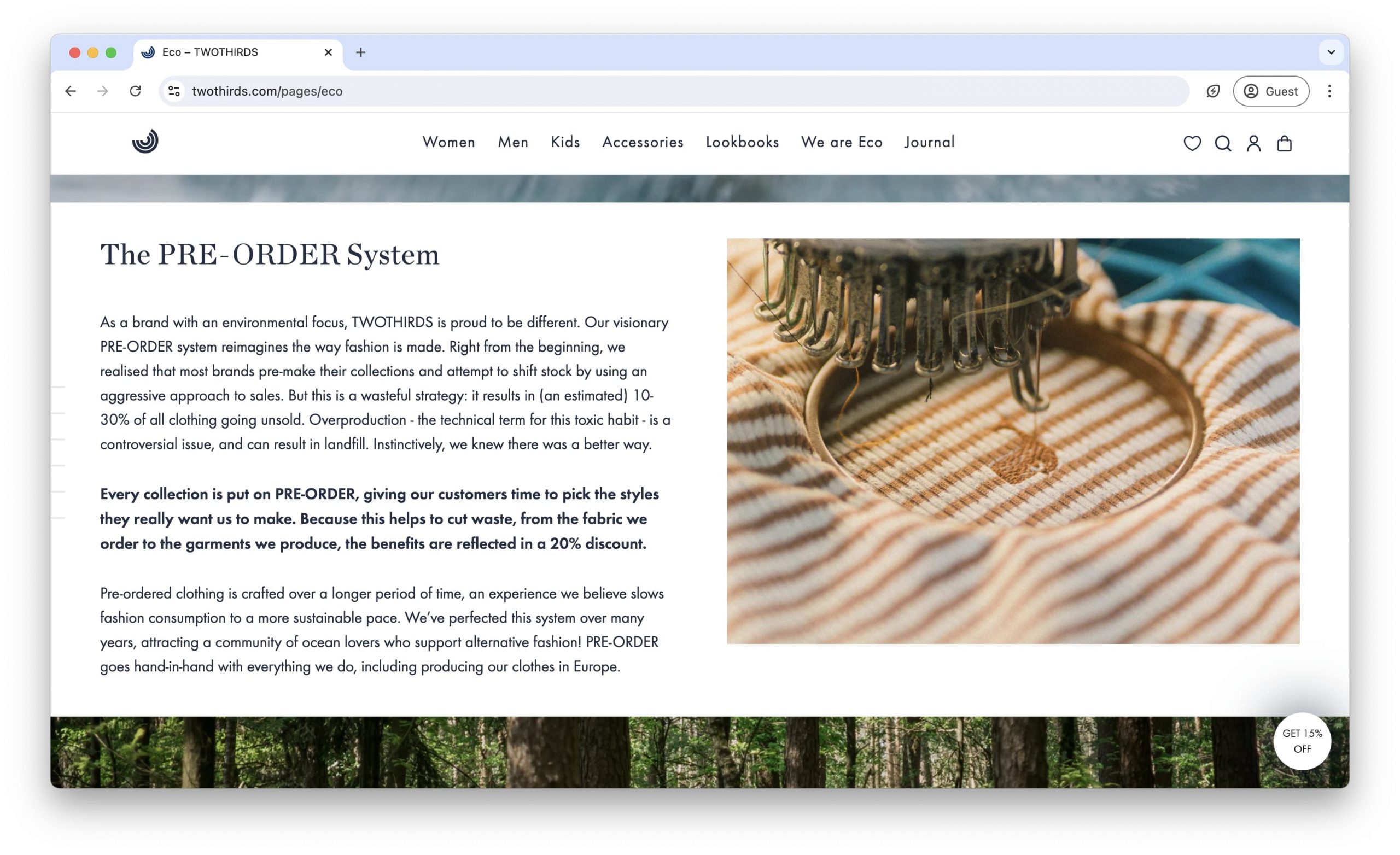
A standout example of this approach is TWO THIRDS, a brand that has innovated with its visionary pre-order system.
This system reimagines the traditional fashion production model by allowing customers to select the styles they want to be produced. This method helps cut waste dramatically, as it aligns production closely with consumer demand.
In addition, TWO THIRDS offers a 20% discount to customers who participate in the pre-order process, incentivizing the choice for sustainability.
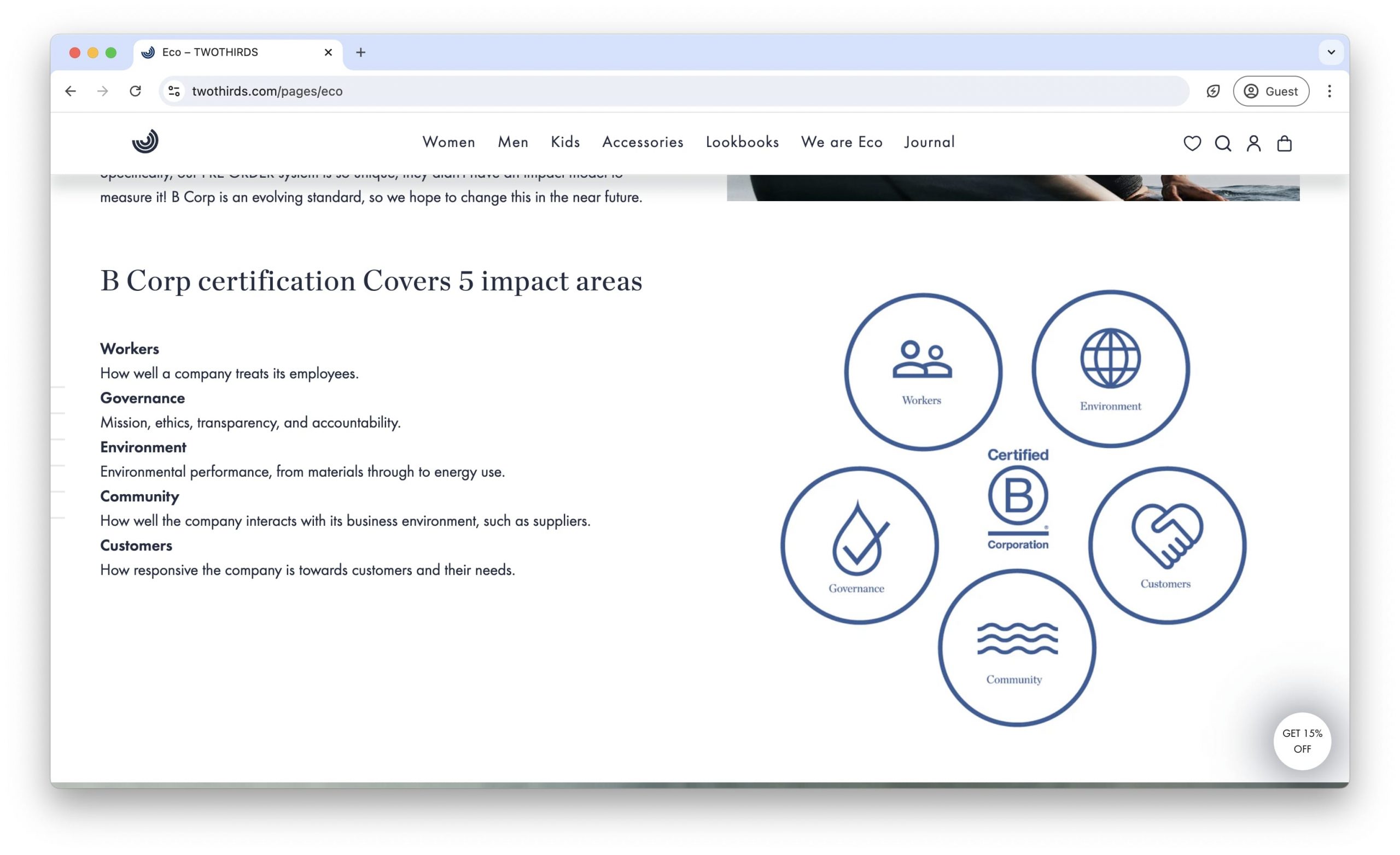
TWO THIRDS goes beyond just sharing their production process. They provide detailed insights into every tier of their supply chain, from materials sourcing to the final sewing processes.
For instance, their website includes extensive information about their factories, the environmental impact of their materials compared to conventional options, and their certification under the B Corp standard, which covers governance, workers’ rights, community engagement, environmental impact, and customer relations.
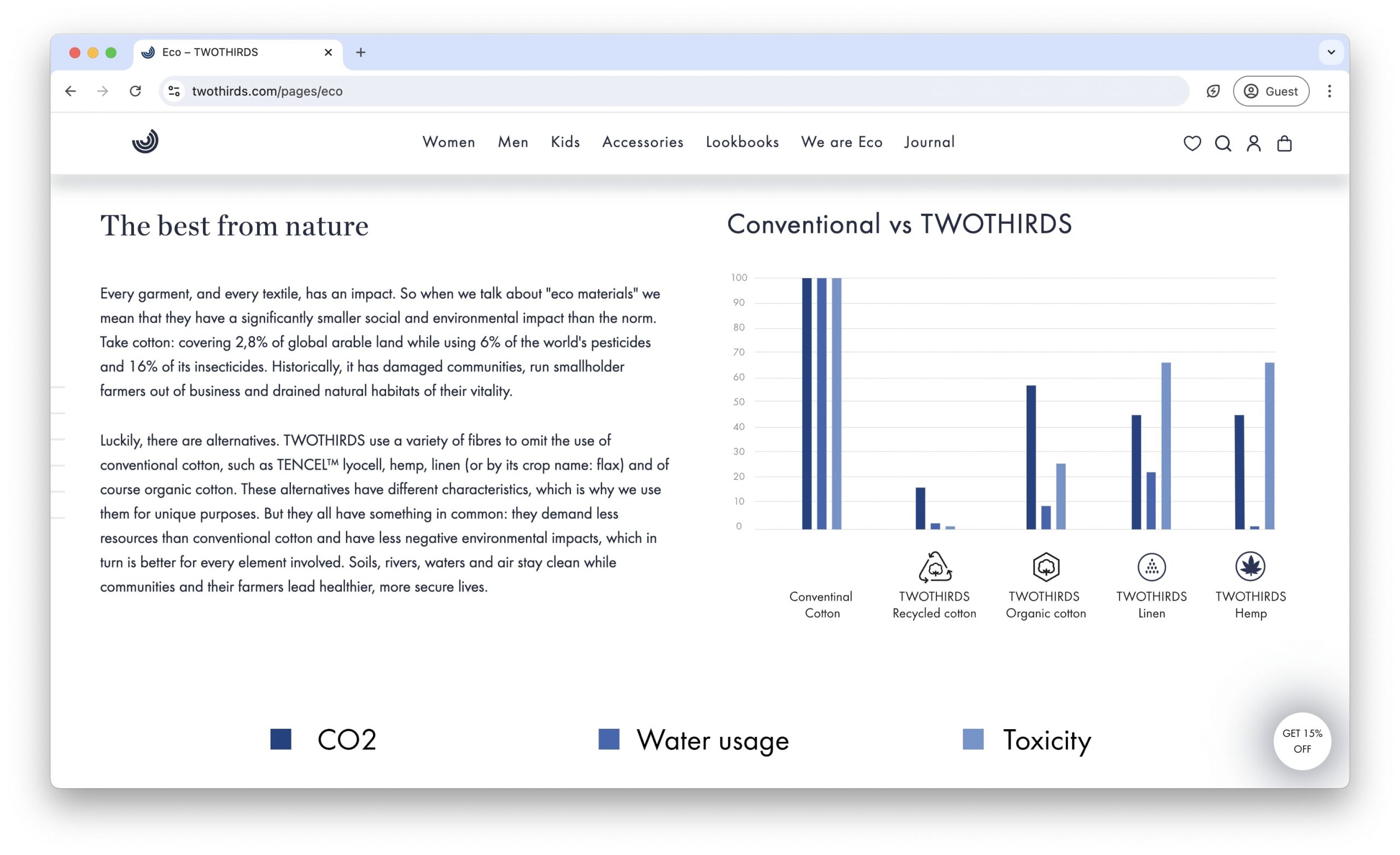
By publicly sharing these details, TWO THIRDS not only adheres to a transparent business model but also educates consumers on the importance of sustainable practices.
This approach has helped them build a loyal community of eco-conscious customers and set a new standard in the fashion industry for openness and responsibility.
Personalization and Customization
Like everywhere else, customers now want more personalized experiences. The evolution of e-commerce has brought about an era where consumers desire unique products that reflect their personal style.
Made-to-Order Clothing
Many fashion brands are adopting a made-to-order model, reducing waste and allowing customers to select details such as fabric, fit, and design elements.
This approach minimizes overproduction and caters to the consumer’s desire for exclusive, one-of-a-kind pieces.
“We Are KIN” exemplifies this trend by embracing slow fashion with a strong commitment to made-to-order production.
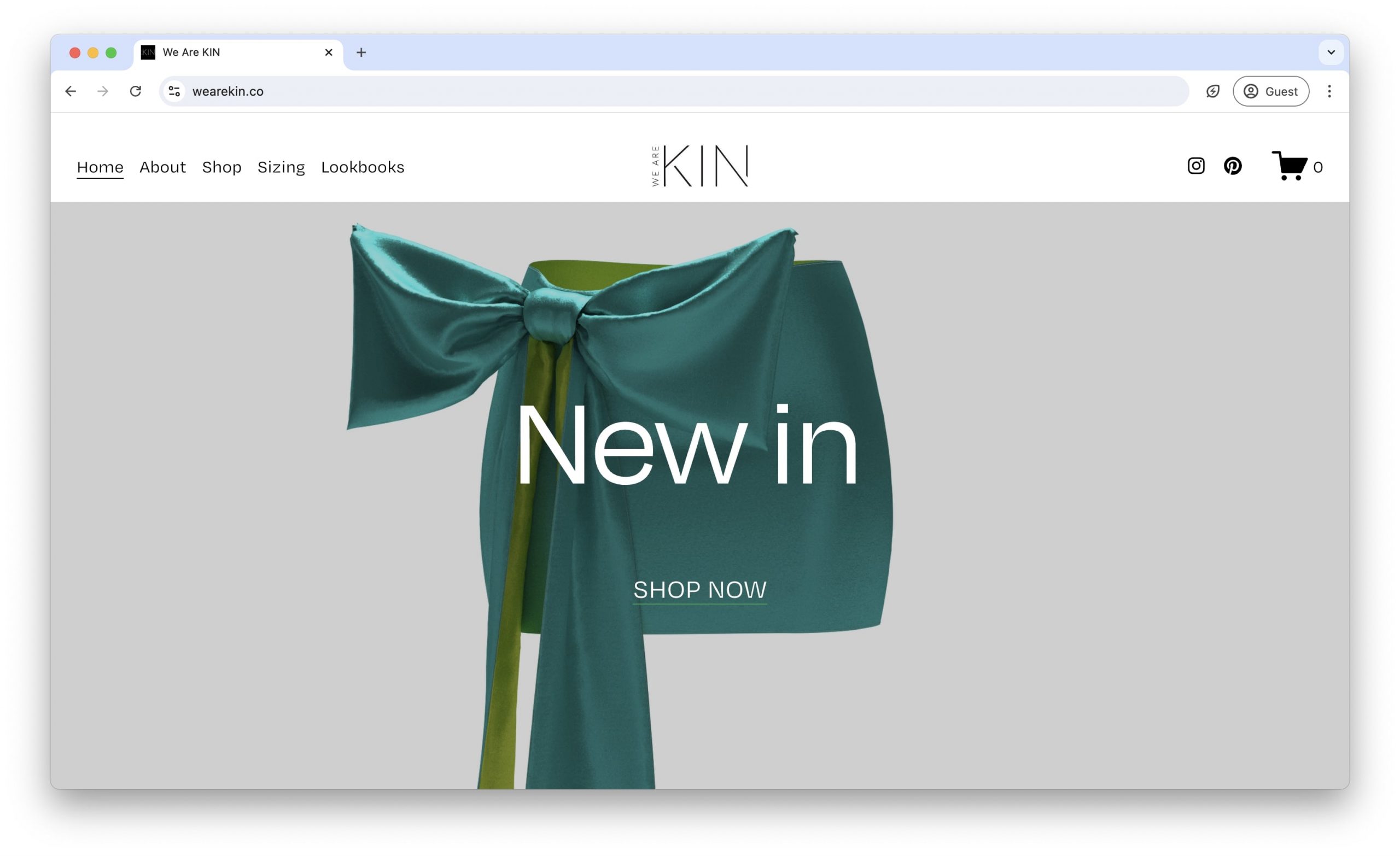
“We Are KIN” markets itself as a brand dedicated to slow fashion. Each item is handcrafted to ensure quality and sustainability. This model not only supports ethical production standards by reducing unnecessary stock and waste but also aligns closely with consumer preferences for personalized fashion.
On its website, the brand highlights its process and philosophy, emphasizing how each garment is thoughtfully crafted upon order. This allows for a high degree of customization, ensuring that each piece is as unique as its wearer.
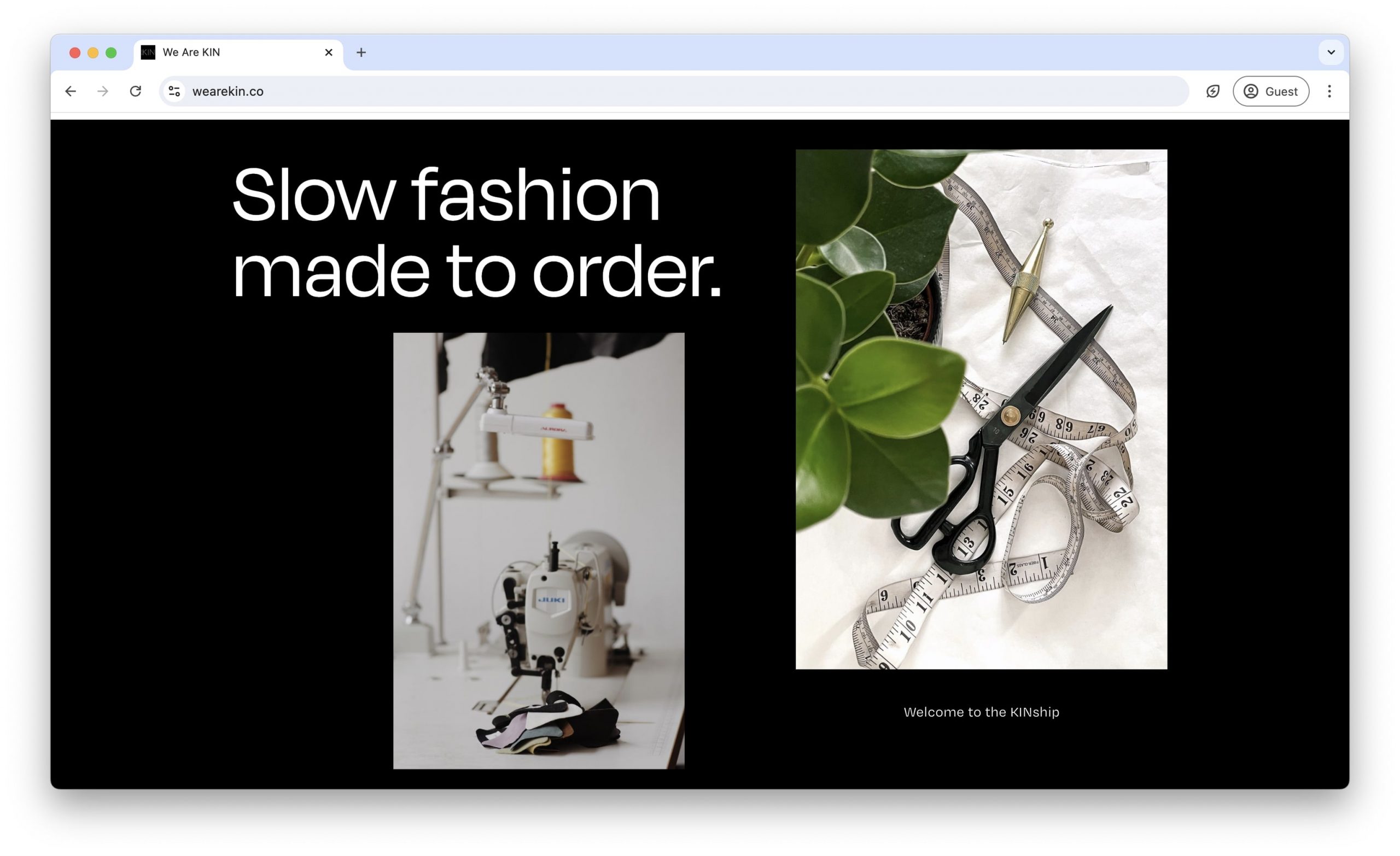
The brand’s approach to made-to-order clothing is prominently displayed on their online platform, where they describe the care and time invested into each piece.
“We Are KIN” leverages this model to forge a deeper connection with its audience, offering them a participatory role in the fashion creation process.
Customers are invited to select from a range of fabrics and design options, making the shopping experience more interactive and personal.
By positioning itself in this niche, “We Are KIN” promotes a more customer-focused fashion industry.
Customizable Fashion Elements
The rise of customizable fashion elements is also transforming how customers engage with their clothing.
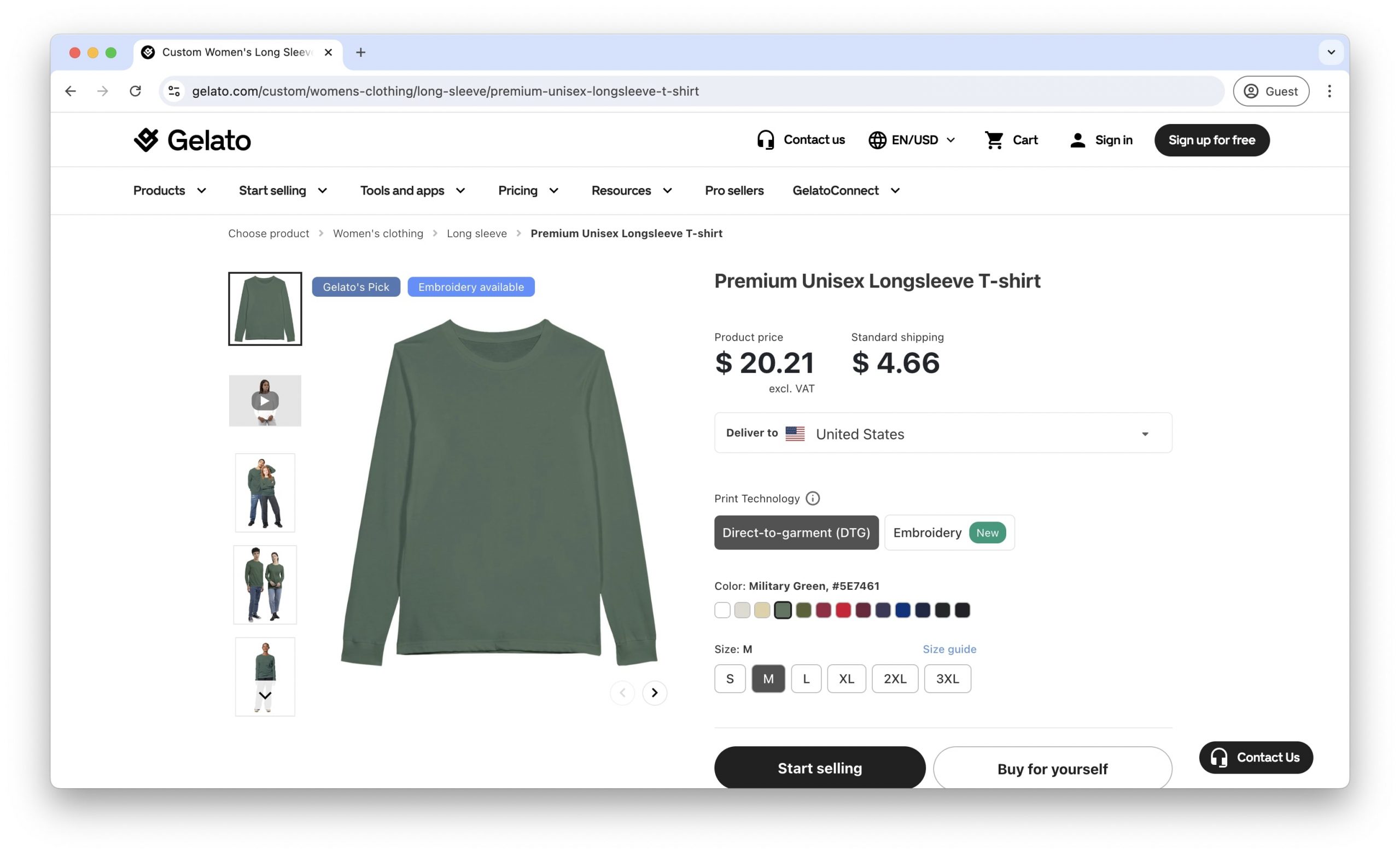
Gelato exemplifies this movement by providing a user-friendly platform where both individuals and brands can design custom apparel with ease. Their service allows for the selection of colors, sizes, and the application of unique designs using direct-to-garment (DTG) or embroidery technologies.
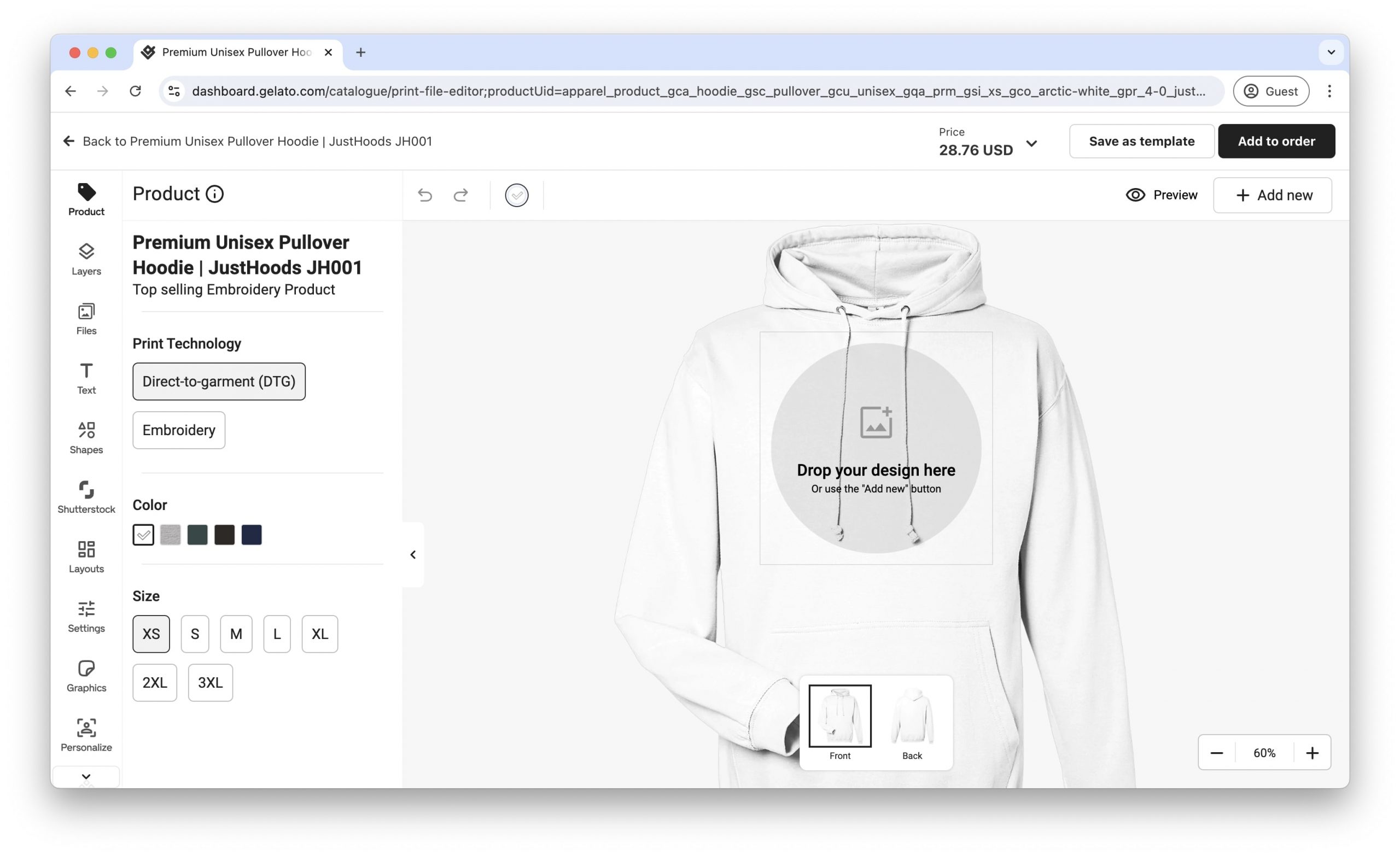
This level of customization is facilitated through a sleek online interface where users can see real-time previews of their creations. For example, customers can choose a basic garment, such as a hoodie or long-sleeve T-shirt, and then personalize it by adding their own designs or selecting from a variety of pre-existing options.
Furthermore, Gelato’s platform is equipped with tools that support various customization options, including adding text, changing graphics, and modifying layout features directly on the product page.
Tech-Integrated Fashion
Tech is all integrated into fashion. Isn’t it Ray-Ban that launched their Smart glasses collaborating with Meta lately?
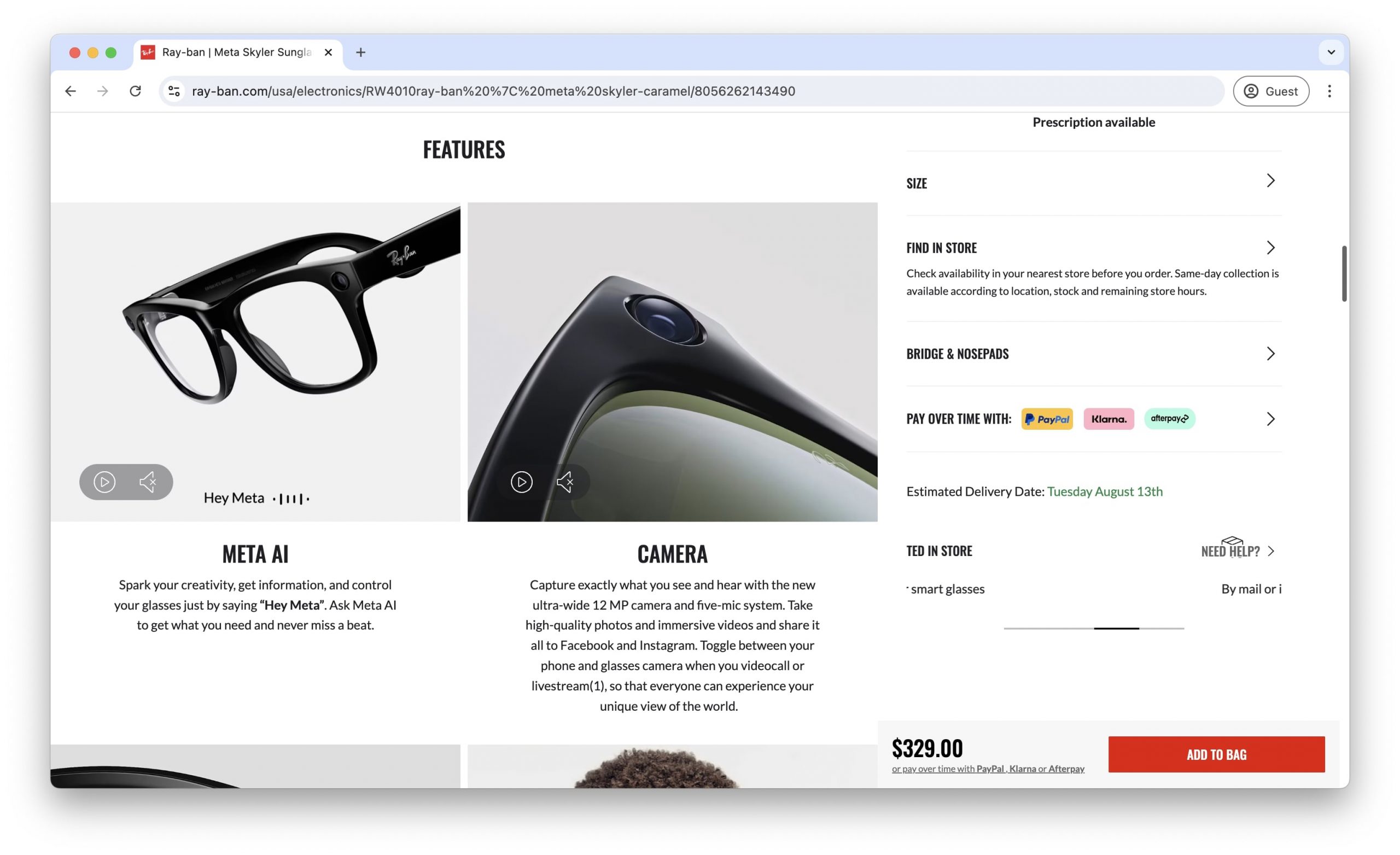
When this is the case, how can we separate tech from fashion in other aspects?
Technology is no longer a separate entity from fashion; it’s seamlessly woven into the fabric of what we wear and how we shop.
Smart Textiles and Wearables
Smart textiles and wearable technology represent the next frontier in fashion innovation. These advancements go beyond aesthetics, embedding functionality directly into the fabric.
For instance, clothing equipped with sensors can monitor a wearer’s vital signs, regulate body temperature, or even charge electronic devices.
One standout example of this technology is Arion, a company that has developed advanced smart insoles designed to optimize athletic performance. These ultra-thin insoles, which are only 2mm thick, are embedded with nano-tech sensors capable of capturing lab-quality force measurements and 3D biomechanical movement.

The insoles provide live movement metrics, including real-time analysis of footstrike patterns and predicted load to show athletes their specific risks of injury.
Arion’s smart insoles can be worn inside any sports shoe, making them virtually undetectable while providing invaluable data to customers.
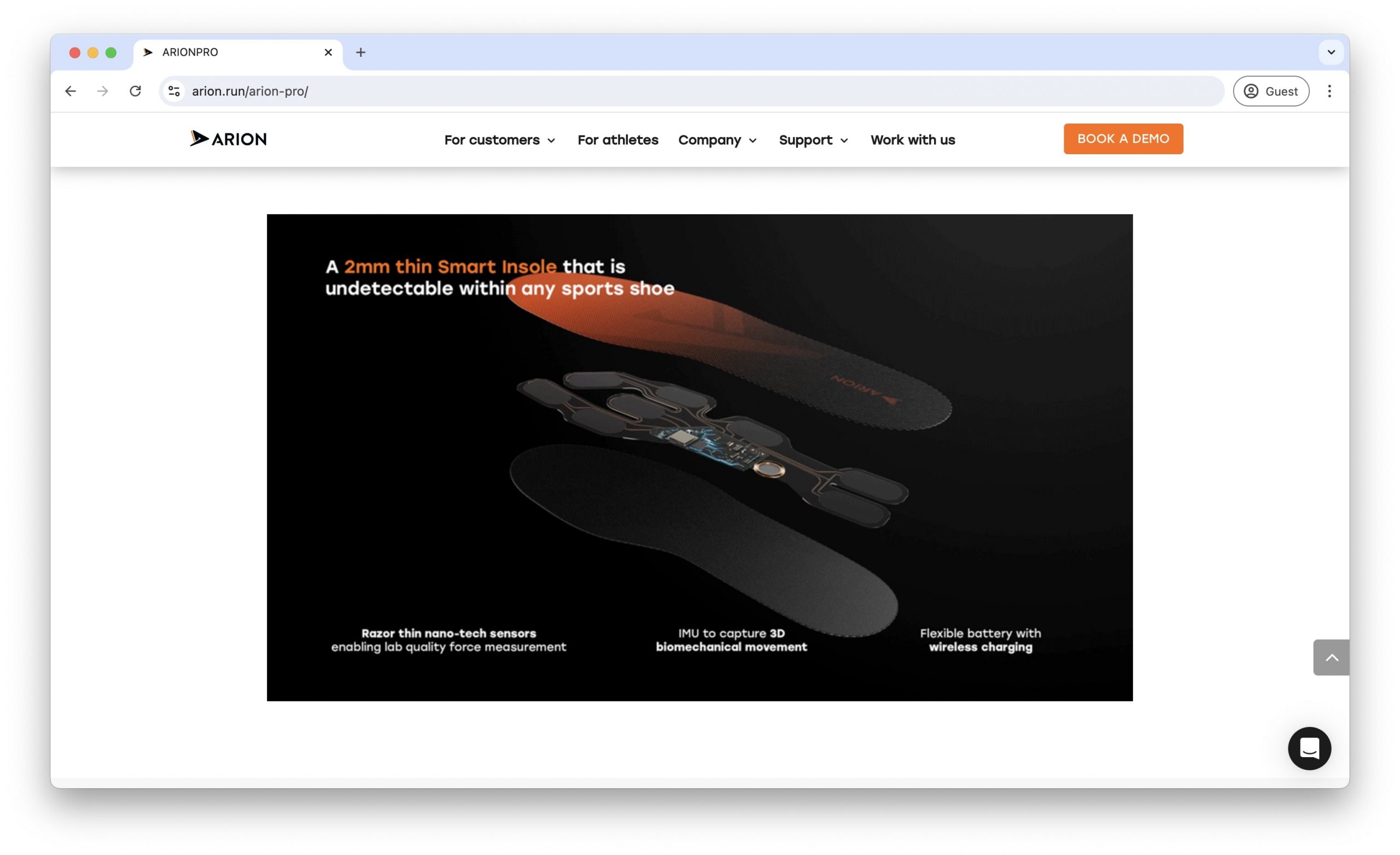
This is a prime example of how smart textiles are pushing the boundaries of what is possible in both fashion and function.
Virtual Try-Ons and Augmented Reality (AR)
The shopping experience has been revolutionized by virtual trials and augmented reality (AR). These technologies allow consumers to visualize how products will look on them without ever stepping foot in a store.
For example, AR-enabled apps can overlay clothing or accessories over a live image of the user, providing a realistic preview of how the product will look in real life.
Farfetch, a leading global luxury fashion platform, has effectively integrated AR technology into its shopping experience. Customers can virtually try on items like shoes through their mobile app, as seen with their Alexander McQueen sneakers.

The app uses AR to superimpose the selected item onto the user in real time, giving a realistic preview of how the product will look when worn.
This technology not only enhances the shopping experience but also builds consumer confidence in making online purchases.
As AR technology continues to evolve, virtual try-ons are likely to become a standard feature across e-commerce platforms.
Rise of the Digital-First Fashion Brands
The rise of digital-first brands is transforming the e-commerce fashion industry. They are redefining the traditional e-commerce model by making use of technology, social media, and direct-to-consumer strategies to engage with customers in innovative ways.
Digital-first brands are not just competing with established fashion houses but setting new standards for how fashion is marketed, sold, and consumed.
Social Media Influence
Social media offers a direct line of communication with consumers. Platforms like Instagram, TikTok, and Twitter are not just marketing channels but integral parts of the shopping journey.
Digital-first brands use these platforms to build brand identity, engage with followers, and create buzz around new product launches.
Influencer marketing plays a significant role in this strategy. By collaborating with social media influencers, brands can reach highly targeted audiences. And, they can add authenticity and credibility to traditional advertising.
User-generated content is another powerful aspect of social media influence. People share their own experiences with a brand and product, which builds a great loyalty chain. People are more likely to be influenced by each other’s real experiences rather than promotions.
Love on Friday is an example of a brand that has successfully used social media. It uses influencer marketing and user-generated content to showcase its products in real-world settings, making its fashion more relatable and aspirational to potential buyers.
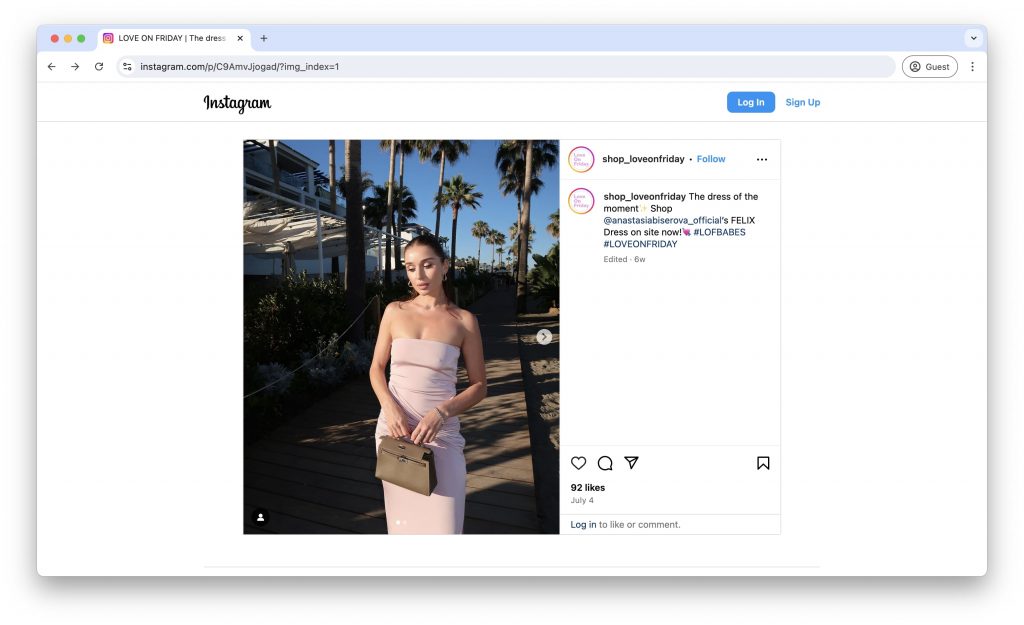
By collaborating with influencers, Love on Friday is able to reach a broader and highly engaged audience. Influencers often share styled looks featuring Love on Friday products, which not only highlight the brand’s clothing but also demonstrate how the pieces can be incorporated into everyday outfits.
Gymshark is another brand that has mastered the art of social media influence, particularly through its Gymshark Athlete program.
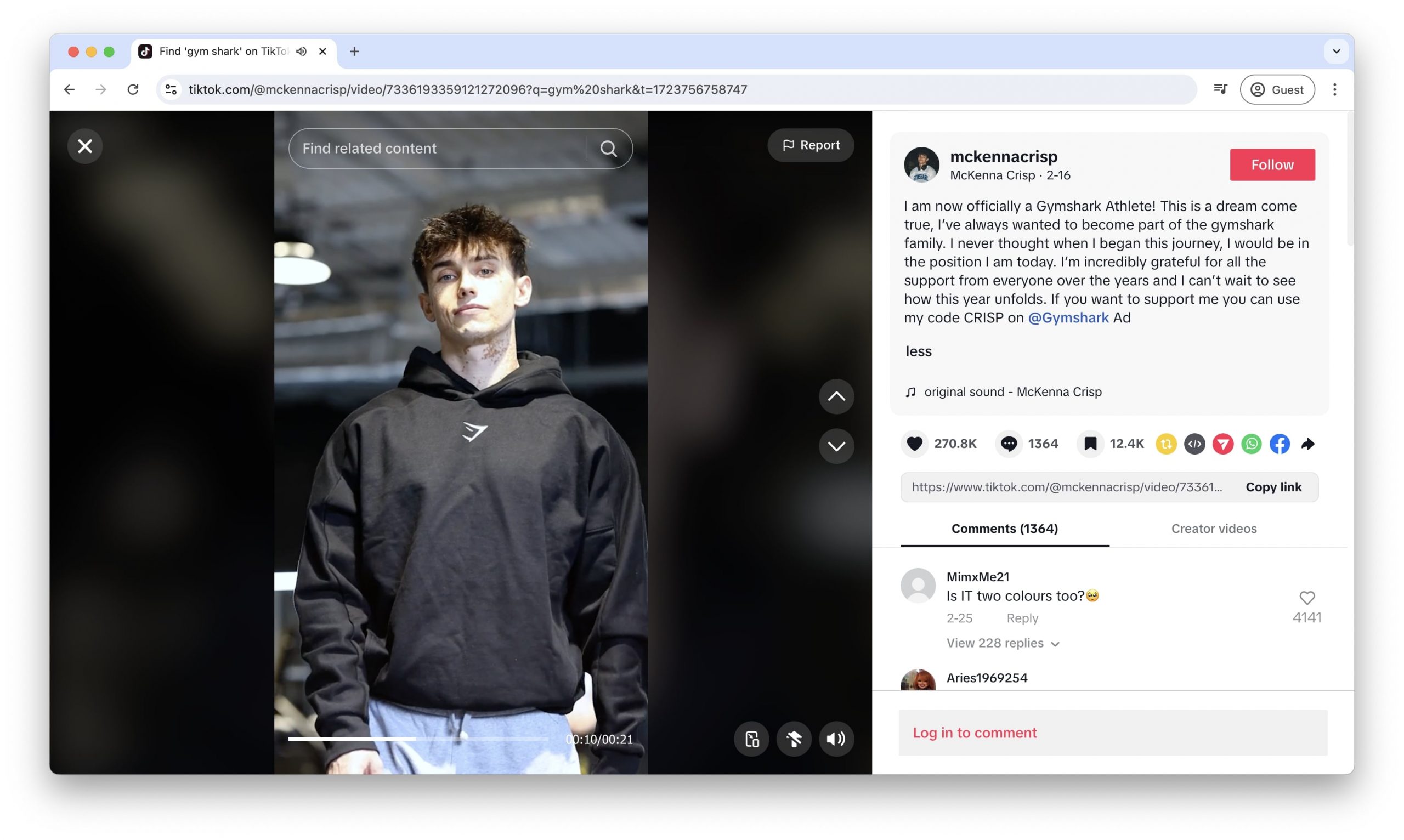
Gymshark collaborates with fitness influencers and athletes who embody the brand’s ethos of fitness and motivation.
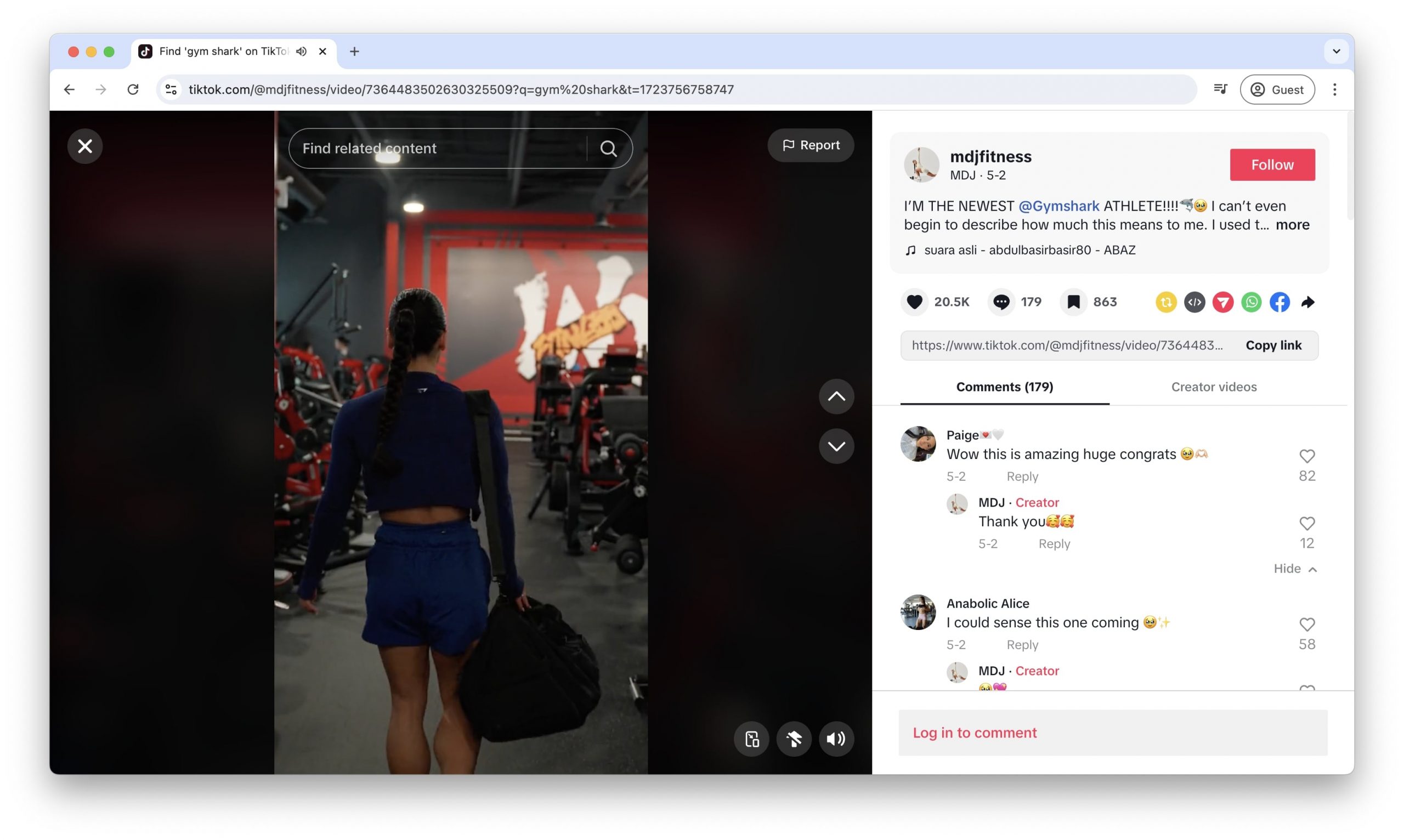
These athletes share their personal fitness journeys and showcase Gymshark apparel in their content, often across platforms like TikTok and Instagram.
This marketing strategy is an organic form of distribution and it is impactful in leading to more sales. Simply like word-of-mouth.
Direct-to-Consumer (DTC) Model
The direct-to-consumer (DTC) model has emerged as a game-changer in the fashion industry, particularly for digital-first brands.
By bypassing traditional e-commerce channels, DTC enables direct selling to consumers through brands’ own websites or platforms. It can be a website built on Shopify or directly from Instagram accounts.
Maison Cleo is a French fashion brand that is an example of the power of the Direct-to-Consumer (DTC) model with its unique approach to selling directly through Instagram.
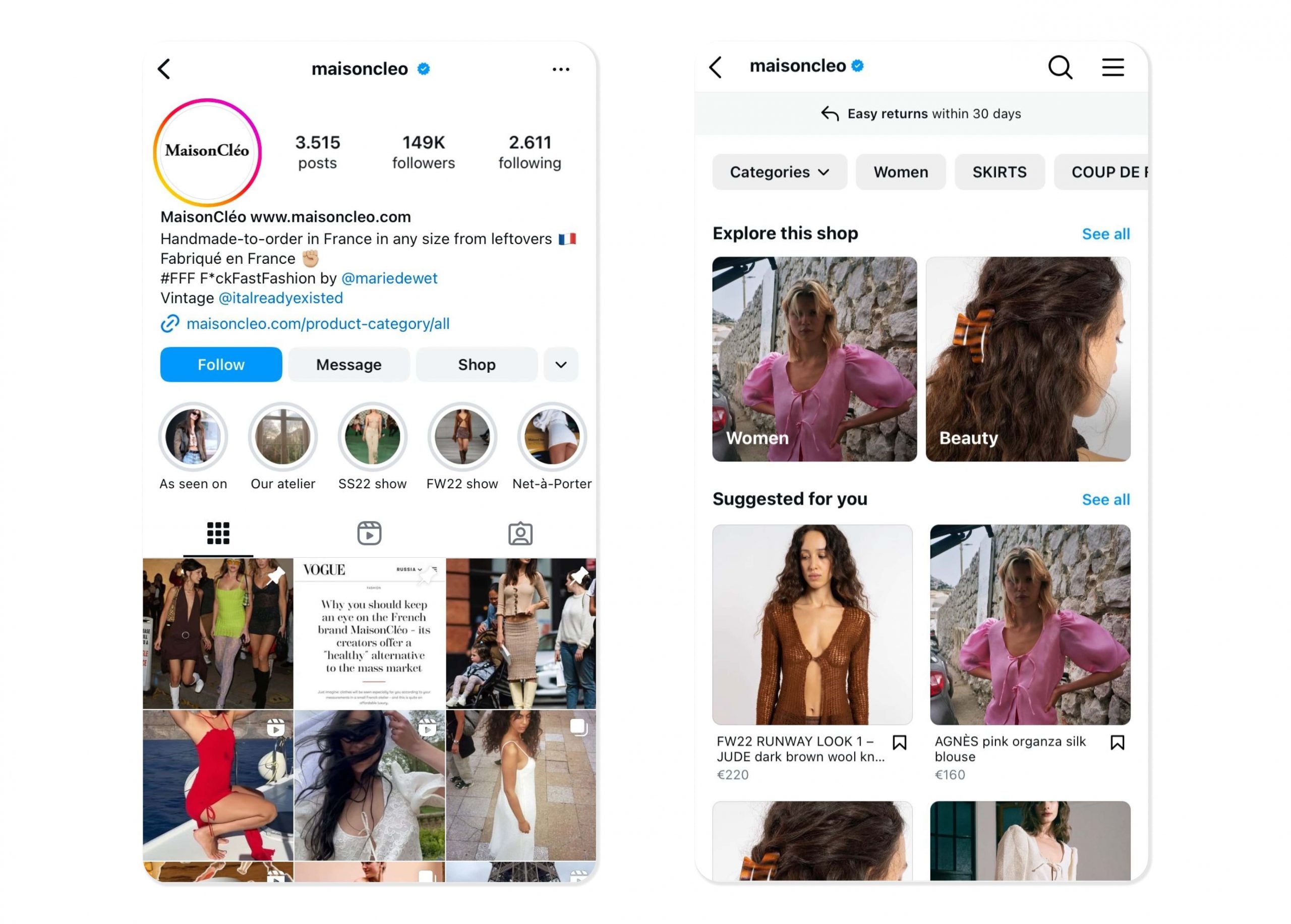
They built a loyal following by selling their pieces exclusively through Instagram drops.
This direct interaction allows Maison Cleo to bypass traditional e-commerce channels, maintain control over their brand image, and build a close relationship with their customers.
Inclusive and Diverse Fashion
The fashion industry is also undergoing a transformative shift toward inclusivity and diversity, recognizing the importance of representing all body types, ethnicities, genders, and identities.
This shift is reshaping how fashion brands approach design, marketing, and customer engagement, with a focus on inclusivity at every stage of the fashion journey.
Size-Inclusive Collections
Size inclusivity has become a critical focus for fashion brands aiming to meet the needs of a diverse customer base.
Traditionally, many fashion lines have been limited in their size ranges. However, the growing demand for inclusivity has led to significant changes, with more brands now offering size-inclusive collections that cater to a wider range of body types.
Forever 21 is an example of a brand that has embraced size inclusivity through its Plus + Curve collection. This collection is specifically designed to provide fashionable, trendy clothing options for customers who wear plus sizes.
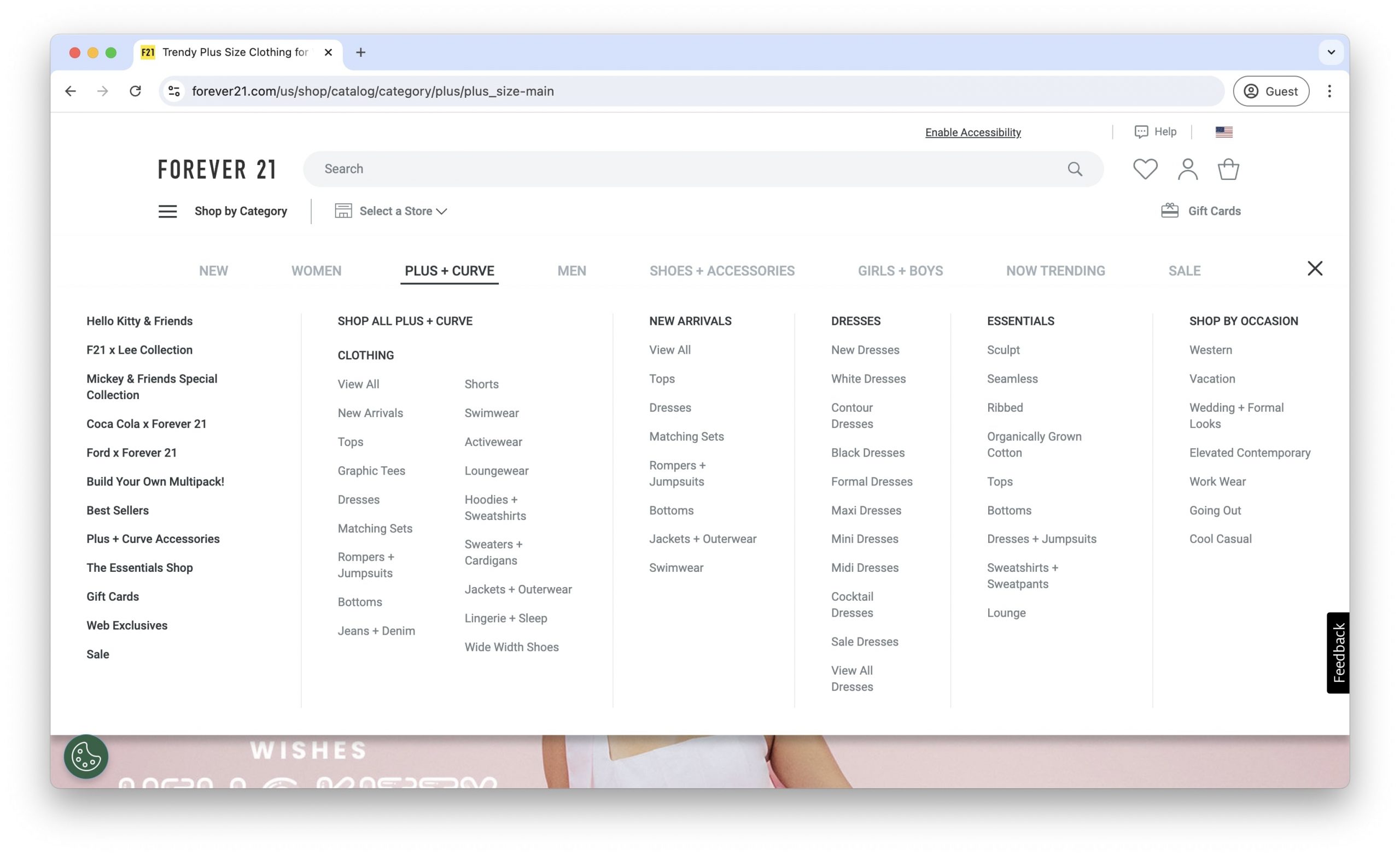
Unlike traditional offerings that often focus on basic or less stylish options, Forever 21’s Plus + Curve collection includes a wide array of trendy items such as dresses, tops, jeans, activewear, and more, all available in extended sizes.
The success of the Plus + Curve collection demonstrates the importance of size inclusivity in today’s fashion market.
Diverse Representation in Marketing
Diverse representation goes beyond just including different body types; it involves showcasing a wide range of ethnicities, ages, gender identities, and abilities.
Brands like Fenty Beauty, Savage X Fenty, and Aerie have been at the forefront of this movement, featuring models from various backgrounds in their advertising and social media campaigns.
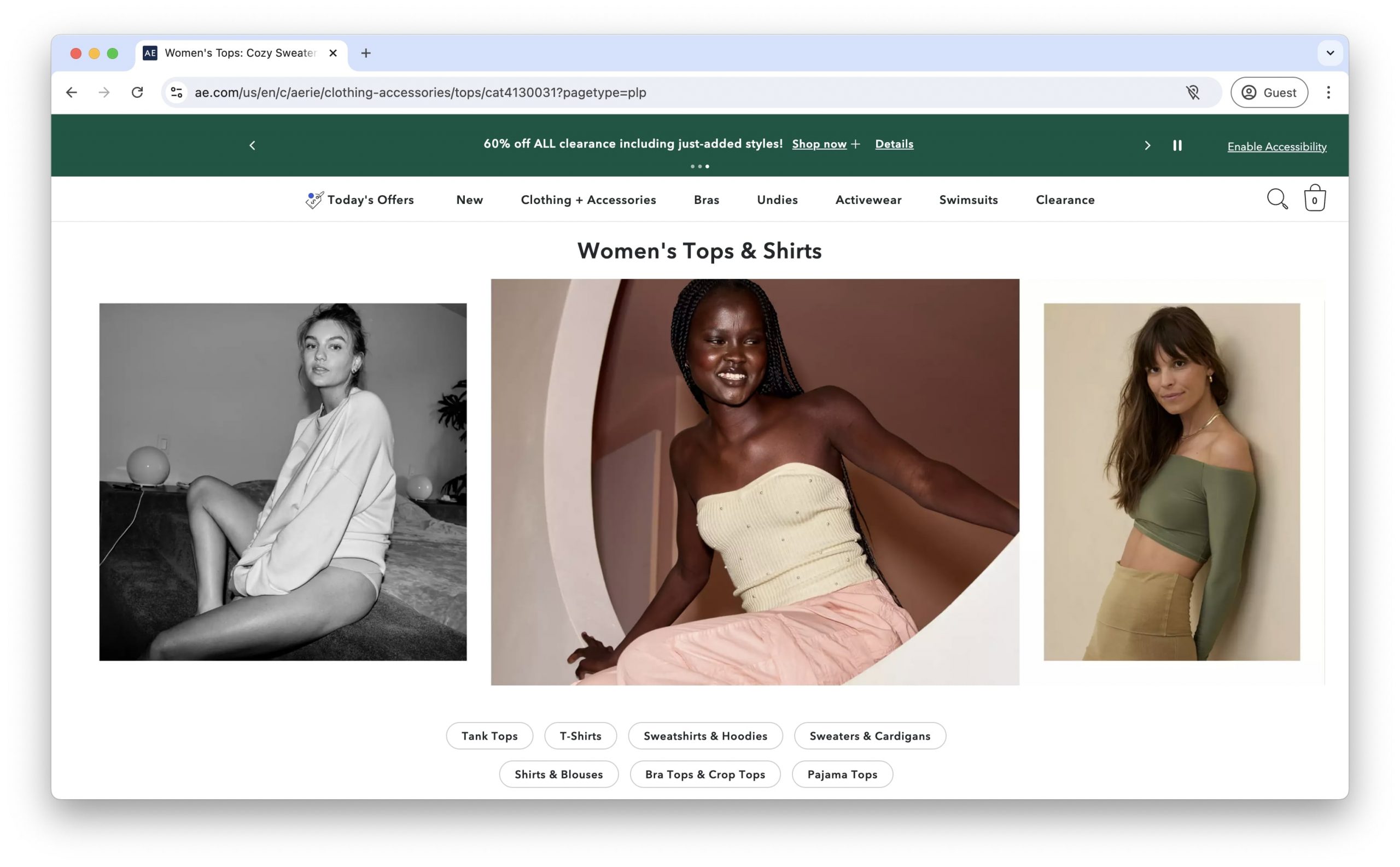
This trend not only reflects the real world but connects with a wider audience who can see themselves represented in the brands they love.
How Juphy AI Can Help Your Fashion Store Stay Ahead
The customer segment in the fashion industry looks for more—as you can see from what we’ve discussed.
More and more consumers care about sustainability, personalization, technology in fashion, digital-first movements, and inclusive and diverse fashion.
These elements aren’t just passing trends; they are the new standards that shape consumer expectations.
While your brand may align with one or two of these Shopify fashion trends, depending on your value proposition and mission, there’s one element that should be universally applied: a superior shopping assistant.
In today’s e-commerce world, having a responsive, intelligent, and personalized shopping assistant can make all the difference in keeping your fashion store ahead of the competition.
This is where Juphy AI, designed specifically for Shopify and featuring the ‘Built for Shopify’ badge, comes in, offering a good set of capabilities designed to enhance every aspect of the customer shopping experience, all of which can be easily accessed and managed directly from the Shopify dashboard.
From facilitating human-like interactions to providing real-time support, Juphy’s AI Agent empowers your store’s connection with the customer.
Human-Like Interactions with ChatGPT
At the core of Juphy AI is the ability to offer human-like interactions through ChatGPT.
Imagine having a shopping assistant who’s available 24/7 and capable of engaging with customers in a conversational and personalized manner.
Whether answering detailed questions about product materials, providing styling tips, or guiding a customer through a purchase, ChatGPT creates an experience that closely mimics a real-life interaction with a knowledgeable sales associate.
This level of interaction
- Builds trust
- Ensures that your customers feel valued and supported
Throughout their shopping journey.
For example, one Juphy customer leverages Juphy’s AI Agent on their website to assist customers in real time, showcasing the AI’s ability to provide personalized, immediate support.
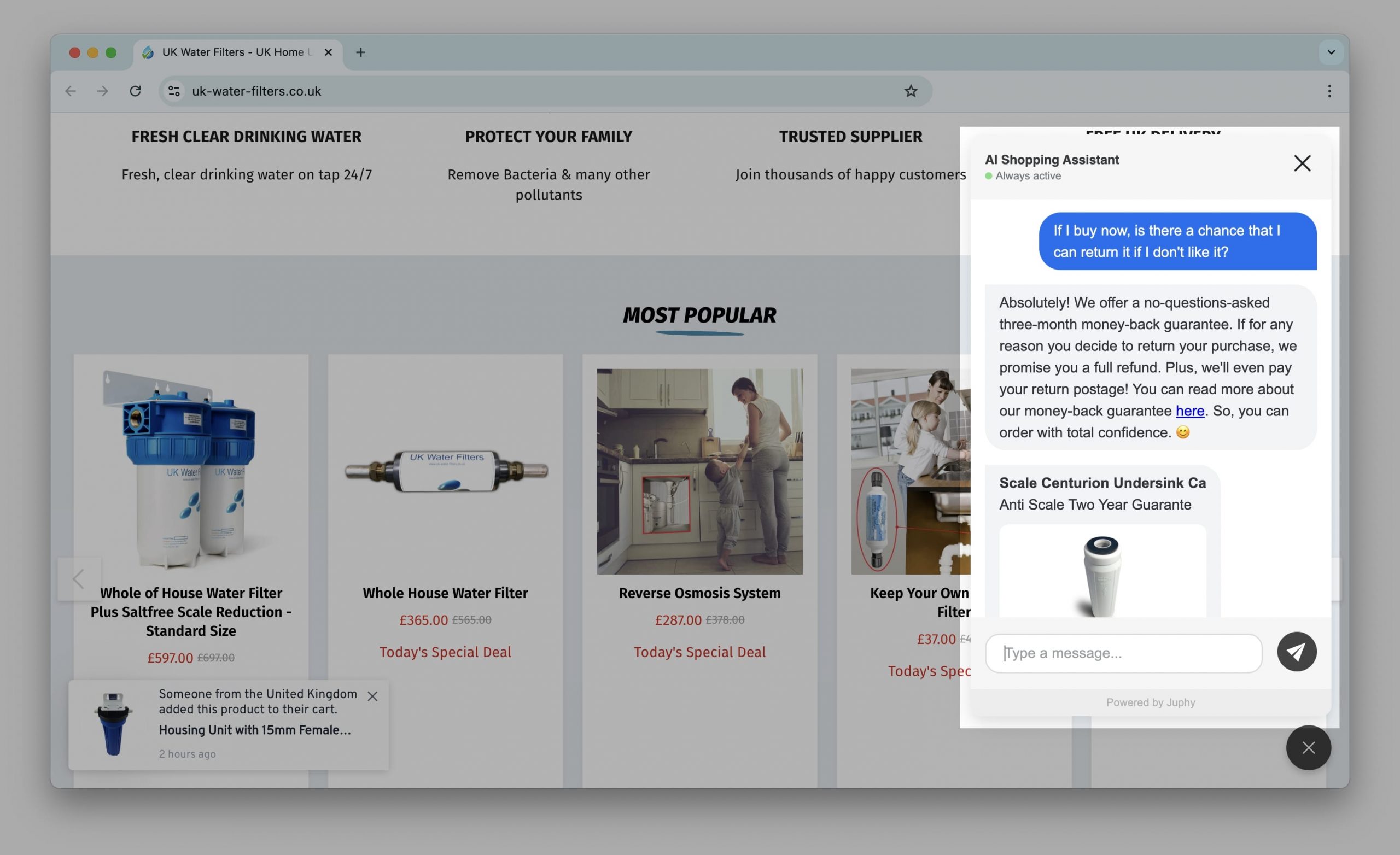
When a customer inquires,
“Hey! I need a water filter for house use, with easy implementation. Can you offer me a product?”
Juphy AI responds promptly with a detailed and personalized recommendation.
It suggests specific products and provides additional options. The AI even explains the longevity and ease of finding replacement cartridges, making the customer feel well-informed and confident in their decision-making process.
Personalized Shopping Experience
Personalization is one of the trends in today’s fashion industry, where consumers expect custom experiences.
Juphy’s AI Agent collects all customer data and generates AI-driven insights to create personalized shopping journeys.
By analyzing past purchases, browsing behavior, and chat talks, Juphy AI can recommend products that align with each customer’s individual style.
This personalized approach lets your brand create valuable connections, which is more likely to result in repeat and happy customers.
Real-Time Customer Support
Juphy AI offers immediate assistance whether a customer has a question about a product, needs help navigating the website, or requires support with an order.
This real-time interaction reduces the frustration that often comes with waiting for a response and ensures that your customers have a smooth and enjoyable experience from start to finish.
With Juphy’s AI Agent, your store can offer the kind of responsive support that builds loyalty and keeps customers coming back.
For instance, UK Water Filters uses Juphy AI to provide real-time support on their website. When a customer inquired, “Hello, I need a filter for my fridge. What would you suggest?” Juphy AI promptly engaged with the customer, asking for the brand and model of the fridge to provide the most accurate recommendation.

Once the customer provided the information, stating, “I have a Samsung Bottom-Mount Freezer Refrigerator”, Juphy AI immediately recommended the appropriate product along with additional helpful details about the filter.
Enhanced Engagement with Instagram Integration
Instagram has become a cornerstone for fashion marketing, allowing brands to connect with their audience on a more personal level.
Juphy AI’s integration with Instagram ensures that your store can maintain high engagement levels by efficiently managing comments, direct messages, and mentions.
This automation doesn’t mean sacrificing personal touch; instead, it allows your brand to be more responsive and interactive, turning casual followers into loyal customers.
Juphy’s AI Agent helps drive traffic to your store and boost sales by streamlining your social media interactions.
Reducing Returns and Enhancing Satisfaction
Returns are a significant challenge for online fashion store owners, but Juphy AI can help reduce them by providing customers with accurate, personalized product information.
By offering detailed sizing advice and answering pre-purchase questions, Juphy’s AI Agent helps ensure that customers are satisfied with their purchases from the outset. This reduces the logistical and financial burden of returns.
An example of how Juphy AI contributes to reducing returns and enhancing customer satisfaction can be seen in its implementation by UK Water Filters, a Juphy customer.
Through their website, they use Juphy AI’s chat feature to provide immediate responses to customer inquiries, such as their return policy.
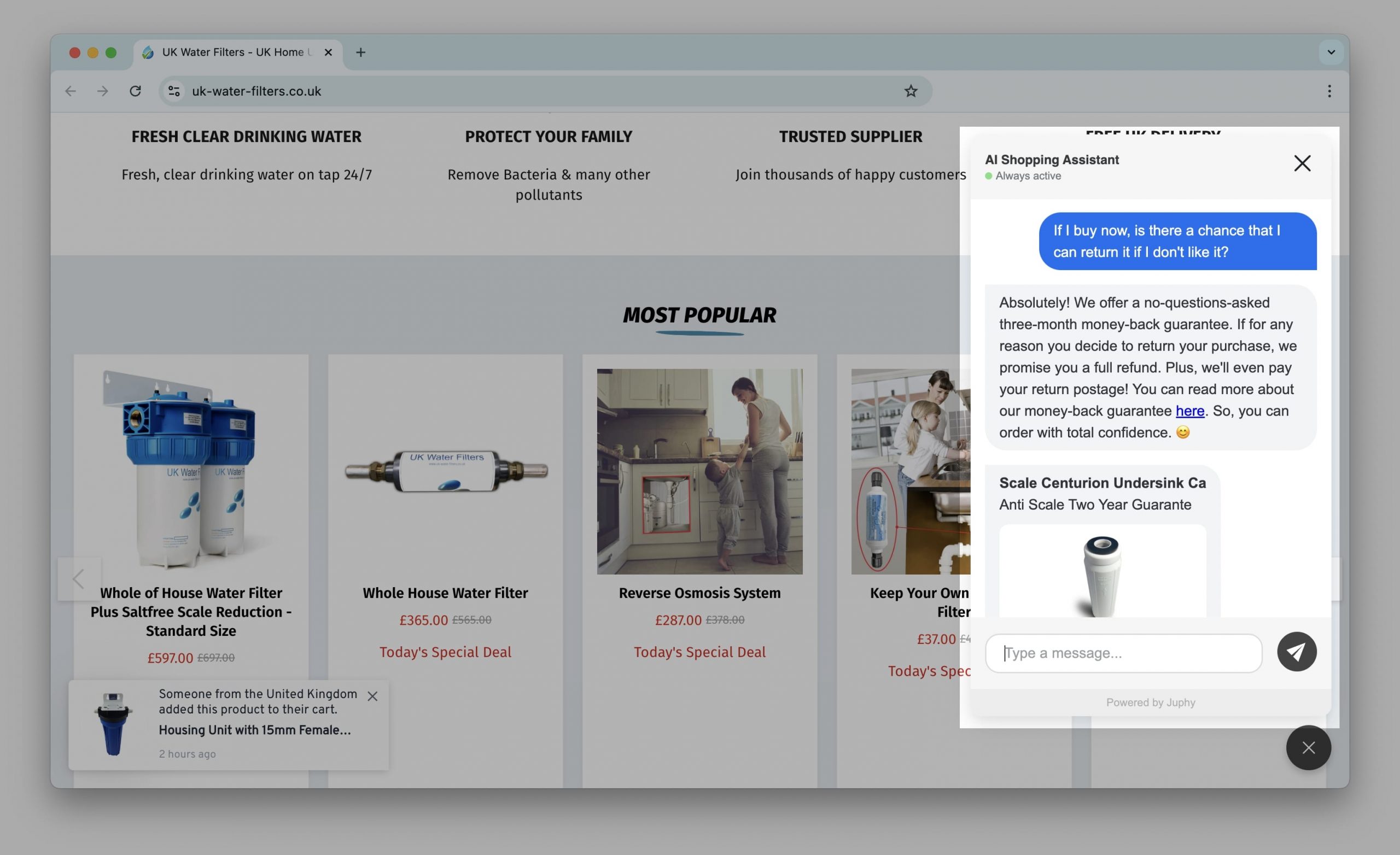
For instance, when a customer asked, “Is there a chance that I can return it if I don’t like it?” Juphy’s AI Agent instantly responded with a reassuring message detailing their no-questions-asked three-month money-back guarantee. The AI also provided a link for more information and emphasized that the company would even cover the return postage.
Conclusion
The fashion industry in 2024 is being shaped by a blend of technology, sustainability, personalization, and inclusivity.
The Shopify fashion trends we’ve discussed highlight consumers ‘ evolving expectations, from the rise of eco-friendly materials and transparent supply chains to the integration of smart textiles and augmented reality.
Brands that embrace these changes and leverage tools like Juphy AI to enhance the customer experience will be better positioned to thrive in the evolving fashion landscape.
Whether through offering size-inclusive collections, engaging directly with customers on social media, or personalizing shopping experiences, the key to success lies in understanding and meeting the diverse needs of today’s fashion consumers.
Key Takeaways
- Consumers are increasingly prioritizing brands that adopt eco-friendly practices and ethical production methods.
- The demand for unique, made-to-order products is growing, with brands like We Are KIN and Gelato leading the way in offering personalized fashion options.
- The integration of smart textiles, wearables, and augmented reality (AR) is revolutionizing consumers’ interactions with fashion.
- Social media influence and the direct-to-consumer (DTC) model are transforming traditional retail.
- Brands that embrace size inclusivity and diverse representation in marketing, such as Forever 21 and Aerie, are setting new standards in the industry.
- As a powerful tool for fashion store owners, Juphy AI enhances customer interactions, personalizes shopping experiences, provides real-time support, and reduces returns, helping your fashion store stay ahead.
